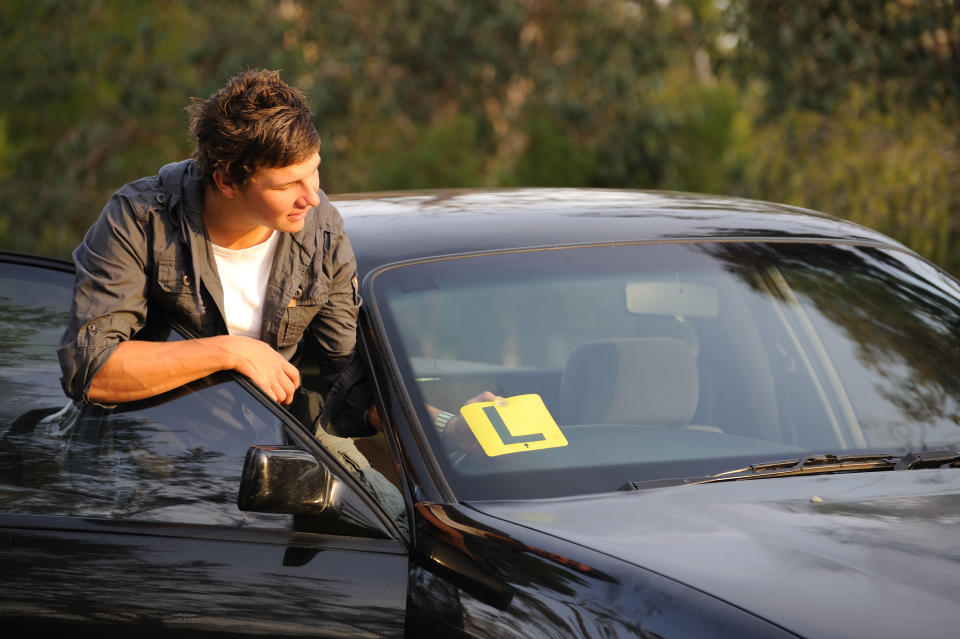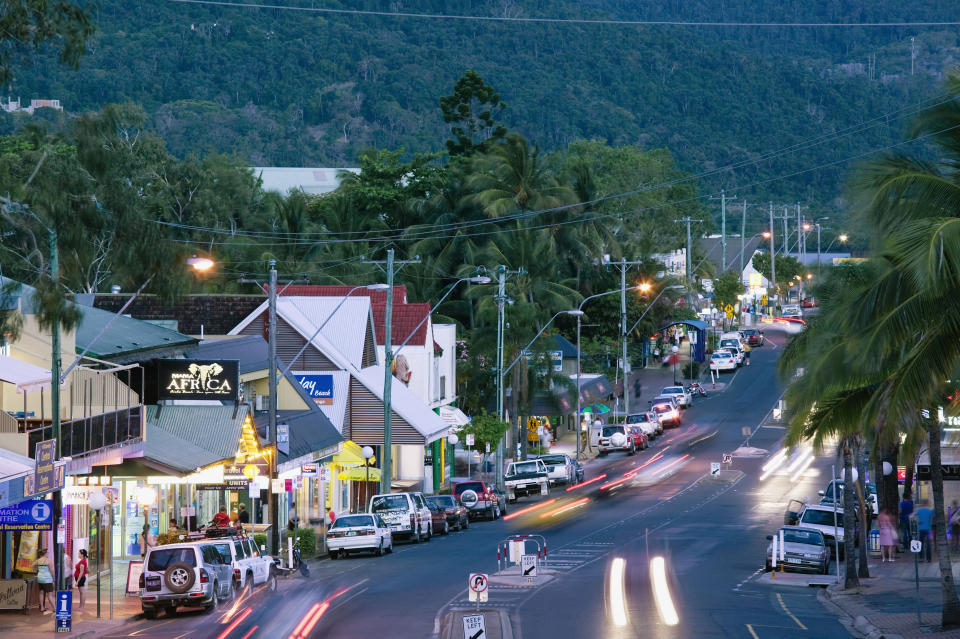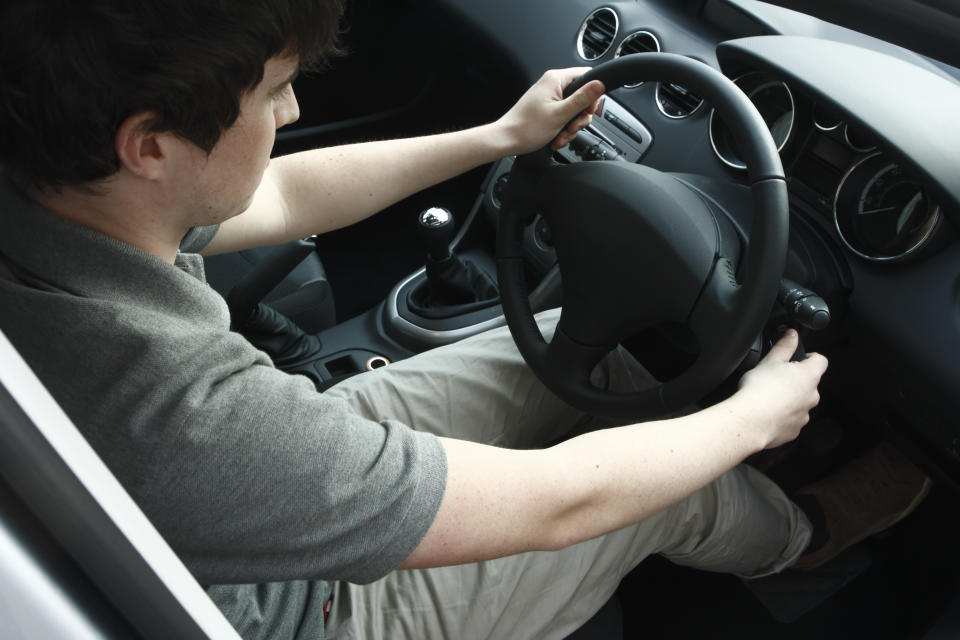How the road rules for L and P plate drivers differ around Australia
When you’re learning how to drive or you’re in the early stages of owning a licence the road rules you’re subject to can be far stricter then for other drivers.
L and P platers across Australia must abide by a range of rules specific to them, but they will often be slightly different from state to state.
They can include heavier penalties, curfews and passenger restrictions.
Driving under a provisional or learner’s licence in Queensland
In the sunshine state, you can learn to drive from age 16. It’s the age where you can obtain a learner’s licence which you have to hold for 12 months before applying for a provisional licence.
You also have to complete 100 hours of lessons recorded in a logbook to apply for a provisional licence. However, if you’re 25 or older and hold a learner’s licence this law doesn’t apply to you.
The reasoning, at least from Queensland’s Department of Transport and Main Roads, is that anyone aged between 16-24 is “60 per cent more likely” to be involved in a road accident.
L-plates have to be displayed when driving too and failure to do so can result in two demerit points. You also need to drive with a supervisor. This person has to have held an open licence for a period of more than 12 months.

They also have to hold a licence for the class of vehicle the learner driver is driving, sit in the front passenger seat, not use a phone on speaker if the learner is under 25 and have a blood alcohol reading of less than 0.05.
Phones also can’t be used with wireless headsets, hands-free or hand-held if the driver is under 25. These phone laws also apply for passengers and the driver.
If you’re a learner driver and found to be using a phone while driving you could be fined and handed three demerit points. Double demerits are also possible in Queensland - so you could potentially receive six demerits if it isn’t your first offence.
The supervisor can be fined if they break any of the above phone rules too.
If you’re a learner, you also can’t drive under the influence of alcohol or drugs. This includes legal and prescription drugs.
If a person holding a provisional or open licence takes the wheel with L-plates on the car they can also be fined. However, this does not apply to accredited driving instructors.

If you accumulate four or more demerits within the space of 12 months while driving with a learner’s licence you will be suspended for three months.
While driving with a P1 Licence, you have to display red coloured P-plates on your car and can’t drive with any alcohol in your system.
There are also restrictions on driving vehicles with eight or more cylinders, turbo-charged or high-powered vehicles.
If you accumulate four or more demerit points you can choose between a three-month driving suspension or a 12-month good behaviour bond. It’s the same with P2 holders.
Part of the bond means you can’t drive between 11pm to 5am.

The same mobile phone rules also apply as they would as a learner driver.
P1 and learner drivers can’t have more than one passenger under 21 in the car between the hours of 11pm and 5am, unless they’re immediate family members. Failing to follow this rule can lead to three demerit points.
However, anyone aged 25 or over while on these licence categories doesn’t have these passenger rules applying to them.
As a P2 licence holder, you also can’t have any alcohol in your system while driving and there are restrictions on driving high-powered vehicles. The vehicle restriction doesn’t apply if you’re 25 or older though.
You don’t have the same restrictions on passengers as P1 drivers.
NSW restrictions for Provisional and Learner drivers
NSW also observes a number of strict laws for provisional and learner drivers.
According to NSW Roads and Maritime Services, to get a P1 licence, as a learner, you need to have completed 120 hours of supervised driving in a logbook unless you’re 25 or older. You have to be at least 17 to apply for the provisional licence.
Speeding laws are strict for P1 drivers who receive three-month suspensions for any offence with a minimum of four demerit points and a fine.

P1, P2 and learner drivers can’t use phones while operating a vehicle - this includes hands-free sets. This also carries a four demerit point penalty and a fine. It’s a double demerit penalty offence if it’s committed over the public holiday periods.
If you hold a P1 licence you can’t drive with more than one passenger in your car between 11pm-5am unless you’re aged 25 or older.
You can be exempt from this law if you can demonstrate a need to drive immediate family members between these hours or you volunteer in community service work such as Lifeline counselling.
If you own a trailer you can only tow up to 250 kilograms in weight or drive under the influence of drugs or alcohol.
P2, P1 and learner drivers all can’t drive under the influence of alcohol.
Speed restrictions for Provisional NSW drivers
P1 licence - can’t drive more than 90km/h
P2 licence - can’t drive more than 100km/h
L and P plates need to be displayed and failure to do so can result in two demerit points and a fine. The plates are the same colours as their Queensland counterparts.
If you get suspended while driving on a P2 Licence, you can be forced to hold onto the licence for an extra six months before being able to graduate to an unrestricted licence.
To go from P2 to an unrestricted licence usually takes 24 months. It takes at least four years to progress through all three licence stages.
P1 and P2 drivers also can’t supervise learner drivers.
Licence rules for Victorian drivers
Vic Roads has outlined a number of rules for young drivers on their Ls.
You can’t drive as a learner with drugs or alcohol in your system, use a mobile phone or tow anything.
To get a provisional licence you need 120 hours of supervised driving unless you’re 21 or older.
You can drive with passengers as a learner.
If you’re a P1 or P2 driver you have to display your plates unless you’re a member of the police and you’re driving for work or you’re a member of the Country Firefighting Authority driving for firefighting purposes.

There are restrictions on towing too. You can’t tow anything as a P1 driver except if it’s requested by your employer, it’s solely used for agriculture, horticulture, dairy, pastoral, commercial fishing or similar, or if you have a fully-licensed driver seated next to you.
You also can’t drive with more than one passenger aged between 16-22 in your car as a P1 driver unless you’re a member of the police force driving for work, driving an emergency vehicle for work, driving with a full licence driver next to you or you’ve been granted an exemption from Vic Roads.
P1, P2 and learners have to display the correct plates too. They are the same colours as those in NSW and Queensland.
Driving with a Provisional or Learner licence in South Australia
Learner drivers in South Australia have to complete 75 hours of supervised driving before applying for a provisional licence, according to South Australia’s Department of Planning, Transport and Infrastructure. This includes 15 hours at night.
You can’t drive faster than 100km/h while on your Ls, must have a supervisor, can’t use a phone at any stage while driving and can’t accumulate more than four demerit points.
Anyone driving on their Ls is allowed to use a GPS provided it’s either part of the vehicle’s design or “secured in a mounting unit that has been commercially designed for the purpose of holding a GPS and is affixed to the vehicle as per the instructions provided by the manufacturer of the mounting unit”.
P1 and P2 drivers also can’t go faster than 100km/h even if the local limit allows it. If you’re under 25 and hold a P1 licence you can’t drive between midnight and 5am or with more than one passenger aged between 16-20 unless they are an immediate family member.
P2 holders also can’t accumulate more than four demerit points.
All P1, P2 and learner drivers have to display the relevant plates.
Driving as a learner or with a provisional licence in Western Australia
WA’s Road Safety Commission states learner drivers don’t have any restrictions on passengers but they do have to drive with a supervisor.
If you're a learner driver, you can’t go faster than 100km/h or drive under the influence.
You also can’t drive within the boundaries of Kings Park in Perth’s west or wherever signs prohibit learner drivers.
To graduate to a provisional licence as a learner you need to complete 50 hours of supervised driving and log them unless you’re 25 or older.

Unlike other states, WA classifies drivers with provisional licences as Novice Driver Type 1 and Novice Driver Type 2.
If you’re type 1, you can’t have more than three demerit points. If you’re type 2, you can’t have more than seven.
Provisional licence holders can’t drive between midnight and 5am but there can be exemptions granted based on employment or education needs.
Learner drivers don’t have night time restrictions.
Northern Territory’s laws for driving as a learner or with a provisional licence
Northern Territory learner drivers have to wait six months until they can apply for a provisional one. Learner driver have to be 16 or older. Unlike NSW, Victoria and other states you don’t have to complete a logbook to go for your licence.
With a provisional or learner licence, you can’t exceed more than five demerit points in 12 months or face a suspension.
You also can’t use a phone while driving and can only be behind the wheel with a supervisor. On your Ls, you can’t drive faster than 80km/h or be under the influence.

Drivers in the NT also only have red P-plates.
The NT provisional licence has to be held for two years if you’re under 25 or one if you’re 25 or older.
Regardless of your age, you can’t drive under a provisional licence at more than 100km/h or under the influence.
Safe provisional drivers can also get a 10-year open licence for free provided they hold the provisional licence for 12 months or more, have a history of no traffic infringements or suspensions, and apply within the last six weeks of holding a provisional licence or no later than six months after it expires.
Driving with a learners or provisional licence in Tasmania
In Tasmania, learner drivers have two stages: L1 and L2.
The L1 licence is highly restrictive and drivers have to hold it for three months before being eligible to go for L2. L1 drivers can’t drive faster than 80km/h and must have a supervisor.
After passing an assessment, to demonstrate knowledge of how to use a car’s controls, a driver can get the L2 licence. Under this category drivers can’t drive faster than 90km/h in 90 or 100 zones, or faster than 100km/h in 110 zone. These speed restrictions also apply to P1 drivers.
Both learners licences require the driver to not be under the influence and not towing anything.

Drivers have to complete 50 hours of supervised driving to obtain the P1 licence along with eight recommended driving tasks. The L2 licence has to be held for a minimum of nine months to undertake the test.
P1 and P2 licences also can’t drive under the influence. If a P1 or P2 is found to be drink driving they will lose their licence.
P2 drivers who exceed the four demerit point limit can be pushed back to P1 restrictions.
Anyone classed as a P2 driver doesn’t have the same speed restrictions as the P1 or learner drivers.
Getting a driver’s licence in the ACT
You have to be more than 15 years and nine months old to get a learner’s licence in the ACT and passed a Pre-learner Licence course, including passing the online ACT Road Rules which is a computerised knowledge test.
That test is provided by a number of schools in the ACT and from various training providers.
To go for your Ps you have to be 17 or older and have held the learner’s licence for more than 12 months. However, if you’re 25 or older it’s six before you can get a provisional licence.
You then have to sit a hazard perception test, which can be done after three months of holding a learner’s licence, and have completed 100 hours of supervised driving if you’re under 25. If you’re over 25, it’s 50 hours.
After getting a provincial licence it’s 12 months of green P-plates and two with green ones unless you’re 25 or older. If you’re 25 or older you just receive green P-plates.
As of July last year, there’s a total mobile phone ban too.
Break this rule and you face a fine of up to $600, four demerit points and a possible loss of licence.
Do you have a story tip? Email: newsroomau@yahoonews.com.
You can also follow us on Facebook, Instagram and Twitter and download the Yahoo News app from the App Store or Google Play.




